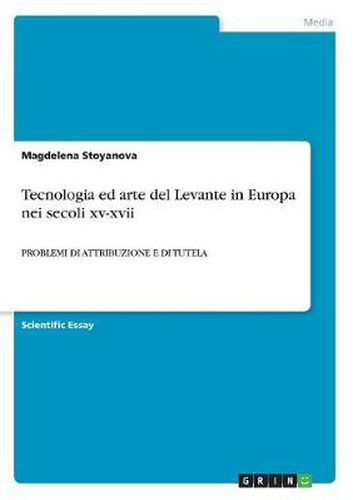Readings Newsletter
Become a Readings Member to make your shopping experience even easier.
Sign in or sign up for free!
You’re not far away from qualifying for FREE standard shipping within Australia
You’ve qualified for FREE standard shipping within Australia
The cart is loading…






Scientific Essay from the year 2009 in the subject Art - Overall Considerations, grade: sehr gut, University of Venice (Centro Interdiprtimentale di Studi Balcanici Internazionali), language: Italian, abstract: Abstract An overview of the most relevant kinds of art techniques imported by Levantine refugees into Occident during Middle Ages and Early Modern Times. Gilt leather and silk have been selected as a case study to illustrate both the surprising extension of the phenomenon in the past and its almost total ignorance today, causing superficial or even erroneous attributions and technical evaluations, on which inappropriate strategies of protection have been built. The relation includes information on specific materials and ornaments imported into Europe from the Levant because of their unsurpassed quality, and stresses the necessity that sources dealing with old techniques and technologies must be tackled on a broad base. Emphasis is placed on the role which combination of historical, philological, technical and scientific knowledge can have for the correct identifying of these artifacts.
$9.00 standard shipping within Australia
FREE standard shipping within Australia for orders over $100.00
Express & International shipping calculated at checkout
Scientific Essay from the year 2009 in the subject Art - Overall Considerations, grade: sehr gut, University of Venice (Centro Interdiprtimentale di Studi Balcanici Internazionali), language: Italian, abstract: Abstract An overview of the most relevant kinds of art techniques imported by Levantine refugees into Occident during Middle Ages and Early Modern Times. Gilt leather and silk have been selected as a case study to illustrate both the surprising extension of the phenomenon in the past and its almost total ignorance today, causing superficial or even erroneous attributions and technical evaluations, on which inappropriate strategies of protection have been built. The relation includes information on specific materials and ornaments imported into Europe from the Levant because of their unsurpassed quality, and stresses the necessity that sources dealing with old techniques and technologies must be tackled on a broad base. Emphasis is placed on the role which combination of historical, philological, technical and scientific knowledge can have for the correct identifying of these artifacts.